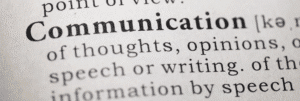Why team building communication games matter more than ever
If pre-2020 meetings were a mild inconvenience, post-pandemic communication is a full-contact sport. Half your team is in the office, three are on a train hotspot, one’s audio is echoing from the kitchen, and everyone’s juggling Slack, email and webcalls. No wonder signals get crossed.
That’s why team building communication games are having a moment. Done well, they sharpen clarity, build trust, surface assumptions and get people actively listening again (instead of half-listening while scanning inboxes). They’re short, energising and wildly revealing—which makes them perfect ice breakers for hybrid meetings, quarterly kick-offs or remote socials.
And here’s the kicker: 89% of employees say their workplace culture has either improved or held steady since the pandemic—proof that change doesn’t have to erode culture if we stay intentional about how we connect. (Source: SHRM Global Culture Report)
What good communication looks like in hybrid teams
Modern teams rarely sit in the same room. So our definition of “good communication” has shifted. Today, it’s about:
- Clarity across channels – What’s voice? What’s chat? What’s a doc?
- Active listening – Actually hearing what’s said before responding.
- Inclusive airtime – Remote participants shouldn’t be background noise.
- Signal over noise – Getting the right info to the right people fast.
- Psychological safety – People speak up when they won’t get shot down.
Games that simulate pressure, ambiguity, missing information or competing priorities help teams practise all of the above in low‑risk, high‑learning environments.
The communication skills ladder (and how games help)
| Skill | What Often Goes Wrong | Game Element That Fixes It |
|---|---|---|
| Listening | People talk over each other on calls | Turn-taking / mute rules / info relay |
| Clarity | Assumptions in chat threads | Structured brief + re-cap loop |
| Brevity | Paragraphs in Teams | Time-boxed 60-sec updates |
| Inclusion | Quiet voices vanish remotely | Random speaking order / role rotation |
| Trust | Mixed signals = doubt | Truth/lie mechanics / shared wins |
Use this ladder to map which team building communication games best serve your current pain points.
10 brilliant team building communication games (virtual, hybrid & in-person)
Below are mix-and-match favourites you can drop into meetings, offsites or full workshop days. Where noted, we’ve flagged which of Zing Events’ larger experiences naturally double as high-impact communication labs.
1. Back-to-Back Drawing – Classic, quick, ruthless on clarity
One person describes an image; the other draws without seeing it. Limit time, ban questions for round one, then allow clarifiers. Debrief: what improved when questions were allowed?
2. Emoji Status Check – Read the room fast
In chat, each person posts two emojis: one for energy, one for workload. Follow with 30-second explanations from anyone who chooses. Great opener for remote calls.
3. Camera-Off Clarity Challenge
All cameras off. Facilitator briefs a short task verbally once. Teams execute and report back in writing. Watch how note-taking, confirmation and written clarity evolve.
4. Silent Line-Up (Virtual Variant)
In-person version = line up by birthday without talking. Remote twist: reorder digital name tiles in a shared board tool (Miro, Mural, Slides) using only drag-and-drop plus emojis. Forces non-verbal collaboration.
5. 60-Second Update Relay
Each team member gets 60 seconds to share one priority, one blocker, one ask. Next person must summarise the previous speaker before sharing their own. Builds active listening.
6. Escape the Box
Teams race to solve chained puzzles where information is distributed unevenly. Players must articulate clues clearly, request missing data and align under time pressure. Ideal for spotlighting communication styles under stress.
7. The Deceivers
Inspired by social deduction formats: some players hold hidden roles or false intel. Success depends on questioning, signalling, reading tone and group alignment. Brilliant for exploring trust, influence and how remote cues get misread on webcalls.
8. Rollercoaster Build
Teams build a working ball run from everyday materials. Assign rotating roles—Designer, Materials Lead, Timekeeper, Tester—to force concise updates and cross‑team comms. Hybrid-friendly with camera rigs.
9. GPS Remote Explorer / Digital Scavenger Dash
Scatter clue fragments across slides, shared docs and live polls; remote squads must collate, decode and report. Reinforces channel discipline: where do we log answers? Who owns the master sheet?
10. Putt A Hole In Hunger
Beyond the CSR impact, this build-then-donate mini golf challenge relies on squads designing holes that link together. Requires spec handovers between teams—excellent for testing written vs verbal instructions.
How to run communication games on web-calls without chaos
Running live games over Zoom/Teams/Meet? Use these guard rails:
1. Brief visually and verbally. Different brains, different channels. Drop written instructions in chat before starting.
2. Nominate a comms captain. One person collates questions and decisions so nothing gets lost when audio lags.
3. Use breakout rooms with time warnings. Auto‑close rooms with a 60‑second countdown so teams wrap clearly.
4. Record debrief takeaways. A single slide per team: What helped, what hindered, what we’ll do differently in real work.
5. Celebrate quick wins. Screenshots, leaderboards, shout‑outs—tiny recognition drives engagement next time.
Linking game insights back to real work
Games are fun, but the gold is in the debrief. Try these bridging questions:
- Where did communication break down—and why?
- Which channels worked best (voice, chat, visual)?
- Who naturally stepped into coordination roles, and how can we support them at work?
- What rituals could we borrow? (e.g., 60‑second update relay for Monday calls.)
- What assumptions did we surface that also show up in projects?
Capture 3 “carry-forward” actions and schedule a 30-day check‑in to see if they stuck.
Quick planner: choose your game mix
| Team Situation | Time | Recommended Games | Format |
| New hybrid team | 45 mins | Emoji Check, Back-to-Back Drawing, Update Relay | Virtual |
| Quarterly offsite | Half day | Rollercoaster Build, Deceivers, Debrief Lab | In-person |
| Remote reconnect | 60 mins | Camera-Off Clarity, Silent Line-Up, Escape Mini Puzzle | Virtual |
| Cross-dept project launch | 90 mins | GPS Explorer, Update Relay, Action Mapping | Hybrid |
Ready to improve how your team talks, listens and aligns?
If you’ve felt the pain of “You’re on mute,” missed messages and endless webcalls, it’s time to get proactive. Team building communication games give you a fast, human way to reset behaviours and rebuild connection across distance.
We can help you pick the right mix—whether you want a 30‑minute energiser for your global Zoom or a full workshop day that rewires how your team communicates.
Next step: Drop us a note and we’ll recommend communication-led experiences tailored to your team size, timing and goals.








